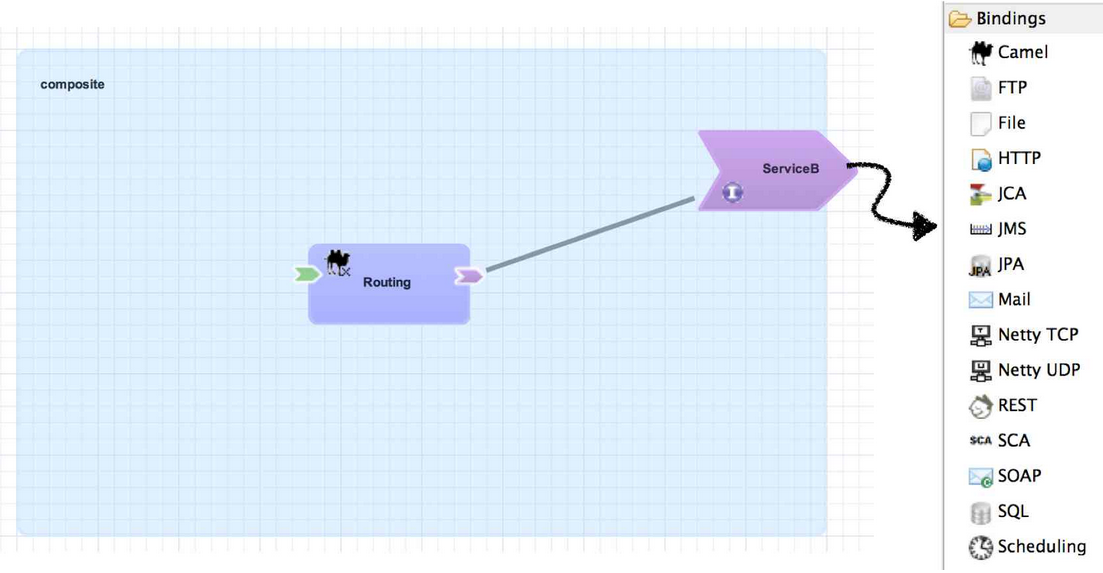Fuse 6 is no longer supported
As of February 2025, Red Hat Fuse 6 is no longer supported. If you are using Fuse 6, please upgrade to Red Hat build of Apache Camel.3.9. Reference Bindings
A reference binding is used to define an access method for an external service with a composite reference. Unlike service bindings, there can only be one binding for each composite reference. The set of bindings available for references is identical to the set of bindings available for services, although the configuration values for a given binding may be different depending on whether it is used as a service binding or a reference binding.
Figure 3.10. Reference Bindings
Example 3.9. Sample Corresponding XML
Note
Although endpoint configuration can be static or dynamic (depending on the component), the endpoint reference itself is static. An example of a dynamic endpoint would be a file component configuration that maps properties (like file name) from the incoming binding and carries it to the outgoing reference. In this manner, the output file can be made to share the same name (in a different directory) as the incoming file that triggered the service invocation. The user did not have to specify a filename on the outgoing reference configuration - it was 'dynamic' and specified at runtime. Dynamic addressing for HTTP-based endpoints (such as SOAP, RESTEasy, and HTTP) is not currently available.
